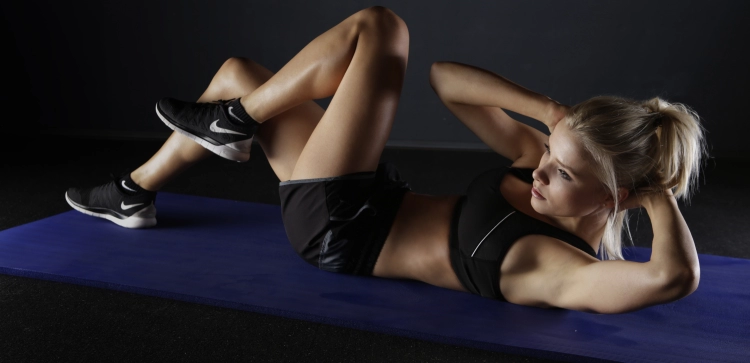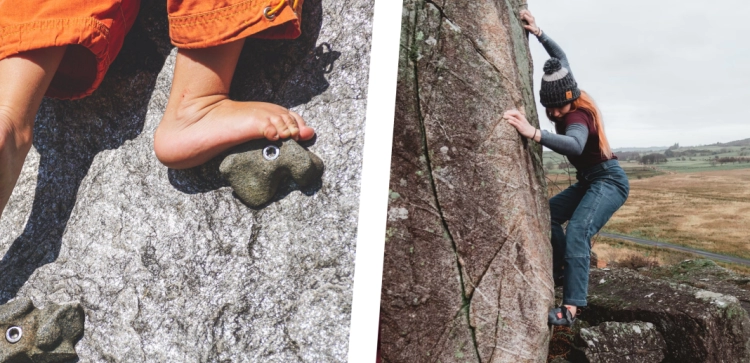What Is Bouldering? Understanding The Concept Of Bouldering In Climbing

Climbers are always seeking out their next climb, whether it be in their style of climbing or a different one. Bouldering is a powerful and relatively short-length form of climbing that offers a unique and different experience compared to other forms of climbing.
Bouldering consists of climbing short but intense and power-demanding routes. This type of climbing requires minimal gear and is available for everyone regardless of their fitness level.
To understand this better, let's go into more detail about what bouldering is, and why it's such an attractive sport for many.
- A Closer Look At The Climbing Style Bouldering
- Climbing Without Ropes: The Essence Of Bouldering
- Climbing Boulders: Challenges And Rewards
- The Grading System: Bouldering Difficulty Levels
- Climbing Holds: The Key To Navigating Boulders
- Climbing Techniques: Mastering Moves For Success
- Safety First: The Importance Of Crash Pads And Spotting
- Climbing Indoors: Embracing Bouldering Gyms
- Heading Outside: Bouldering Outdoors
- The Bouldering Community: Thriving In Camaraderie
- Summarizing What Bouldering Is
- Commonly Asked Questions About Bouldering
- Is Bouldering Suitable For Beginners?
- What Kind Of Gear Do I Need For Bouldering?
- Can Bouldering Help Me Improve My Climbing Overall?
- Is Bouldering Safe Without Ropes?
- Can I Boulder Outdoors Without Damaging The Environment?
- How Can I Progress In Bouldering?
- Is Bouldering A Social Activity?
- Can Bouldering Be Physically Demanding?
- Are There Specific Techniques For Toping Boulder Problems?
- Is Bouldering Suitable For Kids?
A Closer Look at the Climbing Style Bouldering
Bouldering can be defined as a style of rock climbing that emphasizes short, challenging routes on boulders or low-height rocks. Unlike traditional climbing with ropes and harnesses, bouldering typically involves climbing at heights where a fall can be managed safely using crash pads or spotters. This unique aspect of bouldering gives it a distinctive appeal, attracting climbers with a passion for intense, powerful moves and creative problem-solving.
Climbing Without Ropes: The Essence of Bouldering
One of the defining characteristics of bouldering is climbing with minimal gear, such as without ropes or harnesses. All you really need is a safe surface to land on which is usually a crash pad when climbing outdoors, and a mat when climbing indoors. While some beginners still experience a fear of heights even though the route is relatively short, due to the minimal gear required, most of the climber's focus can be directed towards the moves and the route, rather than having to also focus on clipping the rope.
Climbing Boulders: Challenges and Rewards
All forms of climbing require a pretty diverse set of skills, such as being able to move dynamically, precise footwork, and upper body strength. But, due to the short length of boulders, each route requires less endurance and far more physical strength and technique. Taking all of the effort put into climbing, the satisfaction of toping a route in climbing is unparalleled, and bouldering is no exception!
The Grading System: Bouldering Difficulty Levels
There are a few different grading scales used to determine the difficulty of boulders, the most common being the Vermin Scale, or V for short. This grading system usually starts at V0, which is the easiest of boulders and goes up to V17, which is currently the hardest grade in the world, and, at the time of writing this, there are only 4 of them. While many compare V0s to climbing a ladder due to how easy they are, each grade can be a massive jump in difficulty.
Climbing Holds: The Key to Navigating Boulders
Boulders, like other forms of climbing, have a variety of holds, like slopers, crimps, jugs, and pockets. Being familiar with these holds, knowing how to grip them, and having the strength to grip them, will be a determining factor in whether you top the boulder or not.
Climbing Techniques: Mastering Moves for Success
In addition to holds and grip strength, there are many other factors that come into play that will determine if you top the route or not, such as technique, body positioning, general climbing experience, and determination.
Having good technique means knowing when and how to toe hook, heel hook, mantle, shift your body weight, and more. There isn't one factor that will determine your climbing success, rather, it's a group of them.
Safety First: The Importance of Crash Pads and Spotting
Climbers rely on crash pads, placed strategically below the boulder, to cushion potential falls. Spotters also play a crucial role in guiding and protecting climbers during their attempts, making sure the climber falls onto the crash pads rather than on the ground.
Climbing Indoors: Embracing Bouldering Gyms
Indoor bouldering gyms offer climbers a controlled and weather-independent environment to practice their skills. These gyms often feature a wide variety of bouldering problems, allowing climbers to challenge themselves and progress at their own pace. Climbing in a gym also allows climbers to connect with other climbers, work on routes together, share insights and betas, and train together.
Heading Outside: Bouldering Outdoors
While indoor climbing provides an excellent space for training in a controlled way, climbing outdoors, as stated by most climbers, is unmatched. There is just something so freeing about being out in nature and on the rocks that cannot be replicated in indoor climbing gyms. From the approach to the boulder, to actually climbing on it, bouldering outdoors can sometimes feel like a completely different type of climbing. While the essentials are the same, the experience is completely different.
The Bouldering Community: Thriving in Camaraderie
The bouldering community is pretty well known to be welcoming, open, and supportive. While bouldering can be a sport done solo, there is a community that is always ready to help out, share betas, teach, train with, and go climbing with. It's not uncommon for everyone present to applaud another climber who just topped a boulder and for that climber to help others climb it as well.
Summarizing What Bouldering Is
Bouldering is a type of climbing that requires the least amount of gear. It can be done both indoors and in the beautiful outdoors, causing people to explore and be more exposed to nature. It has a loving and supportive community but can also be done solo, and it requires but also builds strength, technique, creativity, problem-solving skills, and many more physical attributes.
Commonly Asked Questions about Bouldering
Is bouldering suitable for beginners?
Absolutely! Bouldering is a great place to start for newcomers in the climbing world. Its shorter routes and lack of ropes allow beginners to focus on fundamental techniques and build their strength gradually.
What kind of gear do I need for bouldering?
Out of the different types of climbing, bouldering requires the least amount of gear, which is one of the reasons why it's so accessible and easy to get started in. All you need are climbing shoes for better grip, and a chalk bag to keep your hands dry. If you go climbing outside, you will need crash pads and spotters for safety during falls.
Can bouldering help me improve my climbing overall?
Yes, it's very common for climbers to be multi-disciplined, meaning they climb in more than one type of climbing. Since bouldering is short and intense compared to sport climbing, which requires a lot of endurance but can also have intense sections with boulder-style moves, many sport climbers train in bouldering to help improve their sport climbing.
Is bouldering safe without ropes?
Bouldering can be safe with the right precautions. Although there are no ropes involved, we climbers use crash pads strategically placed below the boulder problems to cushion our falls. We also rely on fellow climbers, known as spotters, to guide and direct us away from potential hazards during climbs.
Can I boulder outdoors without damaging the environment?
Respecting the environment is important to climbers. When bouldering outdoors, we stay on established trails to protect and preserve the nature around them. We also follow the specific rules and regulations of climbing areas to ensure the preservation of the natural surroundings. We strive to leave no trace and clean up any trash to maintain the beauty of these climbing locations.
How can I progress in bouldering?
To progress in bouldering, I regularly challenge myself with climbs of varying difficulties and styles. Practicing consistently both indoors and outdoors helps me build strength and improve my technique. Climbing with more experienced climbers was the one thing that made the biggest difference. Being able to see how they climb, learn from them, and get tips from them really took my own climbing to a much higher level.
Is bouldering a social activity?
Absolutely! Bouldering is not only about the climbs but also about the community. The climbing community is a very welcoming one that encourages and helps other climbers achieve their goals and progress in the sport. While you can choose to climb on your own, there is always a community ready to help out.
Can bouldering be physically demanding?
Yes, bouldering can and is very physically demanding. Beginner grades are usually not very demanding, but as you progress, the difficulty gets more and more intense, and so do the physical demands of each route. But, unless you also develop good techniques to match your physical strength, you will be limited in how far you get up the grading scale.
Are there specific techniques for toping boulder problems?
There are many techniques that are used in climbing, such as heel hooks, toe hooks, and mantles. In addition to the techniques themselves, though, there is equal importance in understanding when to use each of them, how to position yourself for actually using them, and how to climb efficiently.
Is bouldering suitable for kids?
Absolutely! Bouldering can be a great activity for kids, most climbing gyms even have designated areas with routes designed specifically for young climbers, providing a safe environment for them to learn and have fun. Bouldering can improve their coordination, balance, and strength, promoting their physical development and problem-solving skills.






